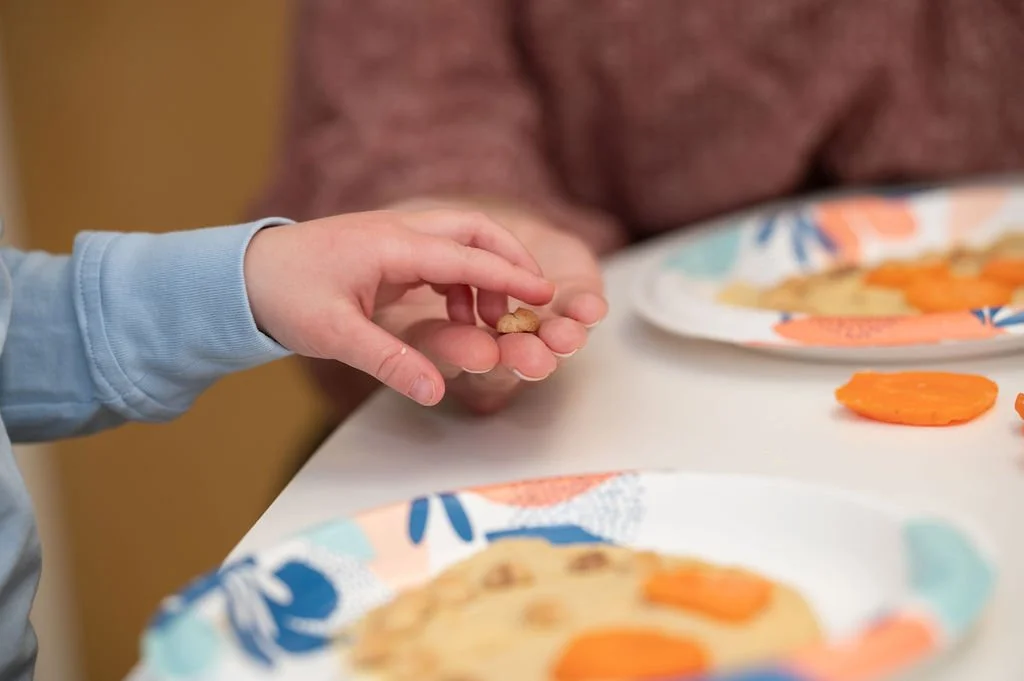Pediatric Feeding & Swallowing
Pediatric Feeding & Swallowing Therapy:
In a perfect world, mealtimes mean moments of connection, nourishment, and joy. The reality for many families: mealtimes turn into stressful battles when a child struggles with feeding or swallowing. Pediatric feeding and swallowing difficulties are more common than many people realize, affecting children of all ages and stages.
Let’s break down feeding and swallowing. That will allow us to determine disordered feeding, explore causes, and discuss how disordered feeding can impact a child’s growth, development, and overall well-being. Whether you’re a concerned parent, caregiver, or simply curious to learn more, this guide will provide insight into recognizing the signs, seeking help, and supporting any child on their journey to healthier, happier mealtimes.
-
Per the American Speech and Hearing Association (ASHA), feeding is the term for supplying someone with nourishment. The term feeding includes all aspects of eating or drinking. Feeding may also be achieved by non-oral routes (e.g. g-tubes). Swallowing is defined as a complex skill during which saliva, liquids, and foods are transported from the mouth into the stomach while keeping the airway protected. Swallowing is commonly divided into phases that involve manipulating foods in the mouth, moving foods toward the back of the mouth, initiating the food moving down the esophagus and into the stomach.
-
Pediatric feeding disorders (PFD) are defined as any difficulty a person has with oral intake as compared to same age peers. PFD is associated with medical, nutritional, feeding skill, and/or psychosocial dysfunction. Medical factors could include GI conditions, respiratory illness, cardiac disorders, or neurological impairments characterized by motor and/or cognitive delays. Nutritional factors could include nutrient deficiencies, malnutrition, and/or restricted dietary diversity. Feeding skill factors could include dysphagia, which is defined as difficulty processing and/or moving food/liquid through the swallowing tract. Dysphagia can occur at one or more of the swallowing phases and puts individuals at risk for choking, dehydration/malnutrition, aspiration, resulting respiratory illnesses, and more. Psychosocial factors could include food aversions, food selectivity/pickiness, and/or maladaptive strategies for intake.
Oral feeding requires coordination of the brain, mouth, respiratory system, cardiac system, GI tract and so much more. It’s incredibly complex! Because of how these systems interact, an impairment in one area can lead to a disruption or dysfunction in another, resulting in PFD (Goday et al., 2019). PFD may be caused by any singular factor or a combination of factors across the four domains mentioned above.
-
SLPs play a central role in the assessment, diagnosis, and treatment of infants and children with swallowing and feeding disorders. SLPs evaluate how a child eats and drinks to identify any difficulties with chewing, swallowing, or managing food and liquids. They also assess oral motor skills, sensory responses and behaviors during mealtimes to pinpoint specific challenges. After identifying the problem, SLPs create individualized therapy plans tailored to the child’s unique needs and each family’s goals. This could involve exercises to strengthen oral muscles, strategies to improve swallowing safety, or techniques to increase comfort level and encourage exploring new foods. Often times, a team approach is our best bet! We love to collaborate with families, caregivers, pediatricians, academic professionals, mental health professionals, and more to ensure consistency across environments.
At the SLP Center, our clinicians have advanced training in pediatric feeding and swallowing. We offer programs that allow a child to interact with food in a playful, non-stressful way while also supporting caregivers in creating a PFD-safe environment at home. We set out to foster development of a positive relationship with eating, including the social aspects of mealtimes and dietary variety for nutritional health and appropriate growth (SOS Approach to Feeding, 2024, Toomey & Associates, Inc.). Finding the right feeding approach for you child can be overwhelming. Look no further!
Child-led play for feeing and swallowing:





